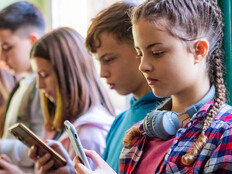Mapping the Benefits — and Potential Drawbacks — of the Flipped Classroom
If you’re like many of the educators I’ve been talking with recently, by now you’ve considered what transitioning to a flipped classroom might mean for your students — and, let’s be honest, for you, too.
There’s no denying that the emerging flipped classroom model, where teachers record lessons to be watched by students on their own and rededicate classroom time to instructor-led drill and practice, presents some intriguing possibilities.
For one, it gives teachers more time to spend with individual students. For another, lectures can be watched and re-watched, so students can learn and digest information at their own pace.
But, as with almost any wholesale instructional change, the transition does not come without its share of potential problems. Some critics say recording lectures for home viewing could lead to hours of homework for students. Still other critics say the digital divide threatens to keep students who don’t have unfettered access to digital and mobile devices from doing the work.
To help determine whether the flipped classroom is right for you and your students, editors at Edudemic recently published this infographic, which hashes out the positives and negatives of the approach. This is by no means an exhaustive list. Educators are sure to inject their own nuances to overcome some of the obstacles encountered in the flipped classroom — but the infographic is as good a place as any to start.
Are you considering a move to the flipped classroom? Do you agree with the points below? Let us know in the Comments section.









